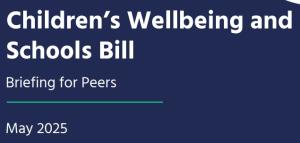Last year, research from my office showed that even before the pandemic, there were 120,000 highly vulnerable children in England who were falling through the gaps in education and social care. This group of children – equivalent to 1 in 25 13-17 year olds – all had significant additional needs and vulnerabilities but were not getting the right help at the right time. This included children referred to social care multiple times but who were not allocated a social worker; children who were absent from school or permanently excluded; children with special educational needs who had multiple exclusions from school; and children who missed large portions of school or dropped out of the school system in Year 11.
Despite the serious nature of these incidents, these children are sometimes ‘invisible’ to the systems that should be there to support them. We read so often about the terrible consequences – children who end up being exploited by the gangs, criminals or abusers who are so ruthlessly efficient at spotting and preying on the most vulnerable. Some of these children will end up in the youth justice system, others scarred for years by their experiences, while tragically some don’t survive it at all.
These high levels of vulnerability and unmet need among older children have led to increasing numbers of teenagers being taken into care. Across England, there has been a 26% increase in the number of 13-17 year olds entering care between 2012/13 and 2018/19. The result is that more than a third of the children who entered care in 2018/19 were teenagers – often with complex needs and vulnerabilities the care system itself finds difficult to help. Compared to younger children in care, teenagers in care are 50% more likely to have an Education, Health and Care Plan, ten times more likely to be have attended a pupil referral unit, and six times more likely to be living in a residential or secure children’s home.
It is striking how often teenagers in these situations can pinpoint when things started to take a wrong turn and became worse: the struggle with their mum’s addiction, the day they were evicted from their home, the death of a beloved Grandad, getting into trouble at school and then being excluded. Significant life events that if noticed – and pieced together – could have been the signal that help was needed urgently. In the absence of any intervention though, it can all combine into a downward spiral and, ultimately, crisis.
We wanted to understand more about these teenagers’ experiences before they entered care to see what might have been done to avoid crisis occurring. This report explores the backgrounds of children taken away from their families as teenagers, to understand their characteristics and experiences, and investigate what more can be done to identify these children and give them the help they need before they hit crisis.
Our analysis shows that children who end up going into care between the ages of 13 and 15 clearly face disadvantages at an earlier age: before they went into care, around two-thirds were eligible for free school meals and just over two thirds had special educational needs. They were also more likely to face instability in school: in the year before entering care, one in ten was out of school for a term, one is six moved school in the middle of the year, one in three was persistently absent, and more than one in three had a fixed-term exclusion.
Even with these high level of needs, they are often not getting support. Although these children are more likely to have an identified special educational need or disability, they are less likely to be provided with intensive support from an Education, Health and Care Plan. A significant group of teenagers appear to be coming into care because of risks outside the home rather than within it. Our annual Stability Index shows that teenagers in care are significantly more likely to have the following issues flagged up by social workers: child sexual exploitation (6 times more likely), going missing from home (7 times more likely), gangs (5 times more likely), trafficking (12 times more likely) and child drug misuse (4 times more likely).These children are being drawn into dangerous or criminal behaviour and exploitation which parents often aren’t able to stop.
These children have often had years of interactions with health, education and other professionals but have not been noticed or offered the help they need.
“When I was in school, I wasn’t problematic. I just used to not come in or come in late …Lots of warning signs about my situation were missed. They should have sat me down on my own [and tried to talk to me]. I have some issues going on.” Girl, (18)
“No one sat us down in school and said, “Right, what’s the issue, why don’t you want to come in?” …Ask me why I haven’t done my work. Like how do you know what I had going on at home like the night before? Girl (16) FE college
Our society’s attitudes towards vulnerable teenagers have started to shift over the last decade, from a time when an involvement in sexual and criminal exploitation was judged to be a lifestyle choice, to an increased awareness of the consequences of vulnerability and the need for protection. But this has not yet translated into a consistently effective system of identification, protection and support. Our analysis finds that a third of the children who come into care as teenagers had not been in contact with children’s services at any point in the six years before they entered care, and only a third of them had a social worker in the two years before they come into care. In the time leading up to the crisis of a child being taken into care, the intensive support for them and their families that we would want to see is too often not in place.
“How can a kid who is 14 live on the streets for a year and a half? Where were Social Services at that time? Why did no-one come and get me and put me in care home? I was sleeping in a shed in a back garden with 2 of my mates who was wanted. 14! If I caught a 14-year-old now on the streets and that I would put them into care and that.” Boy (16)
Yet these children can be identified, when local systems work well. Those who work with or come into contact with children regularly – teachers, doctors, police, youth workers – can often spot the signs of vulnerability and do something about it. Like the youth worker who notices a young teen suddenly has lots more money to spend and a new phone, and finds out that they are being intimidated by a gang. High threshold levels for help and poor co-ordination means though that often these moments fail to lead to concrete help. Covid has only made this even worse. Last November the number of referrals to children’s social care was 12% lower than usual.
Those teenagers who do get taken into care are the tip of the iceberg of a much wider group of invisible, vulnerable children. This research confirms that there are many opportunities to intervene to help children that are missed and that there are more children in this country who will not meet the threshold to come into care, or to get an EHC plan or to access mental health care, but who are still struggling – dropping out of school, with special educational needs, and becoming vulnerable to exploitation. Our annual vulnerability report shows that even before the pandemic there were the 2.3 million children in England growing with vulnerable family circumstances – but less than a fifth of them were being supported by children’s social care, while more than a third were not even known to local services.
There is both a moral and economic case for helping the country’s most vulnerable children if we can – boosting life chances, preventing crisis and reducing ongoing costs to the public purse. We cannot continue to leave them to fall through the gaps and into crises that can determine the outcome of the rest of their lives.



